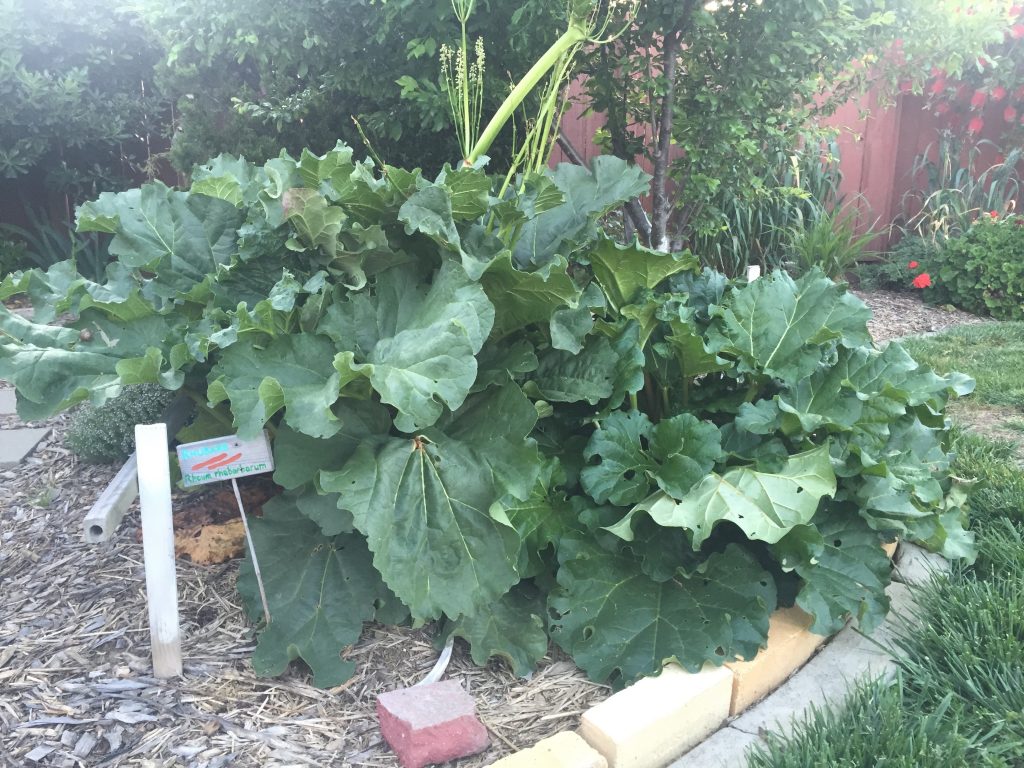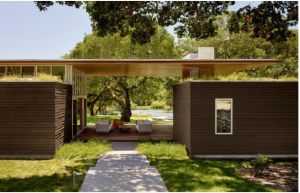Chef Rebecca Tip!! - January
January 12th, 2021

 Besides putting up all those holiday decorations and doing that frenzied shopping, carve out some time to plant a few bare root edibles. They will bring you tasty gifts for many years to come.
Besides putting up all those holiday decorations and doing that frenzied shopping, carve out some time to plant a few bare root edibles. They will bring you tasty gifts for many years to come.
Bare root plants are plants that go dormant during the winter and can be dug up and stripped clean of all soil, leaving their roots completely bare. They can then easily be propagated and transplanted.
Many vegetables and berries do best when planted during the winter. Those include artichokes, asparagus, grapes, strawberries, raspberries, blackberries and rhubarb. Fruit trees, including apples, apricots, cherries, figs, pears, nectarines, peaches and plums also do very well when planted in their bare root form. The best time to plant is from late December through February.
I grew up in the Midwest where rhubarb seemed to grow wild around every corner. It came up every year around our chicken coop, along side of the garage, and even, much to my Mom’s chagrin, throughout most of our flowerbeds.
There is truly nothing better than a homemade rhubarb pie, so I am going to give growing rhubarb a go this year.
Rhubarb grows best where winter temperatures drop below 40 degrees, and if recent temperatures are an indicator, this is my year.
Local favorites include Victoria, Crimson Cherry, Glaskin’s Perpetual and MacDonald.
Mature plants can reach 4 feet in diameter; roots and leaves are toxic, so be sure to find a space out of reach of pets that love to chomp on plants. Plant rhubarb at 3 to 4 feet apart in an area that gets morning sun or partial shade.
Dig a large hole, place roots about 2 inches deep and tamp the soil down around roots. Keep it loose around the bud, however. Soil should be well-draining and amended with organic matter such as composted manure.
Don’t harvest the first year, but do remove the flowering stalks in order to push energy to the roots. You can harvest sparingly in the spring of the second year and cut stalks to ground level.
Rhubarb is a heavy feeder so apply a high-nitrogen organic food such as worm castings, blood meal or grass clippings in June and keep the weeds away year-round.
I am also going to do my first-ever asparagus trial this year. Asparagus, once established, can keep on giving for up to 20 years. Avoid varieties that have been bred for the hot and humid summers and extremely cold winters of the East Coast such as Mary Washington and Jersey Giant.
UC Davis has developed several hybrids that work well in our mild climate: UC 157 F1, Atlas F1, Apollo, Grande and Purple Passion.
Asparagus needs full sun and well-draining soil that has been conditioned with peat moss, straw, green manures or leaf mold. Growing in raised areas or hillsides works great.
Overly wet areas will encourage disease and root rot. When planting, dig a trench 8 to 12 inches deep, mix fertilizer into the bottom and cover with 2 inches of soil. Plant asparagus crowns with the bud ends up, about 12 to 18 inches apart and cover with another 2 inches of soil. Gradually add more soil as the plants grow. Space rows 4 to 5 feet apart.
It is best to wait until the second year before harvesting. By the fourth year, plants should be in full production.
Rebecca Jepsen is a Santa Clara County Master Gardener.

Home » Modern House Designs » Mature Oaks and Living Roof contribute to Passive Energy Home
Mature Oaks and Living Roof contribute to Passive Energy Home
There is nothing better than deciduous trees to create passive cooling in the summer via the shade of leaves and passive heating in the winter via the lack of leaves, and since mature oak trees have huge leaves they rank among the best passive energy deciduous trees that mother nature has to offer. Mother nature has also given us other ways to make use of passive energy for our homes and with all the advances in building technologies, one of the best examples of this is the use of a living roof for heat dispersal in the summer and heat retention in the winter, with the bonus of adding another place to plant grass, herbs, sedums or even small rooted vegetables.
Turnbull Griffin Haesloop Architects made use of these passive energy tricks when designing Sonoma Residence, located in Sonoma, California, on a gently sloping meadow that softly descends down to a spring fed pond.
Turnbull Griffin Haesloop Architects made use of these passive energy tricks when designing Sonoma Residence, located in Sonoma, California, on a gently sloping meadow that softly descends down to a spring fed pond.
The criteria for Sonoma Residence was for a home that embraced an indoor / outdoor lifestyle so that their guests could easily transition from the home to the pool to the pond, and since many days in Sonoma can be very hot, Turnbull Griffin Haesloop Architects included a large shady outdoor sitting area underneath an expanded roofline.
A similar design detail is used in the living room where the wood stove is positioned in front of another cement wall. Other passive heat details are the ceiling fan above that sends the rising heat back down to the living level and photovoltaic powered electric heat pumps that provide hot water for in-slab radiant floor heat.
The kitchen is at right angles to the concrete wall and is positioned under a more intimate ceiling height. Wrapped in Douglas-fir, the kitchen embodies a warm and elegant aesthetic that is factually enhanced by the living roof above.
The taller ceiling in the living room is wrapped in clerestory windows that make the bridged roof outside appear to float. Large expanses of operable glazings slide and stack out of the way so that on a sunny day the journey to and from the outdoor zones is effortless.
The pool is heated with solar hot water panels while the poolside dining area is cooled with large shade trellises.
The pool house features a large drum shaped architectural feature that holds an outdoor fire pit.
The drum shaped detail makes a fun statement inside the pool house playroom. This second building also contains changing rooms, a guest room and a utility room that holds the solar hot water and pool equipment.
Further down the slope is a cozy metal fire pit and a small dock that holds a kayak and a zodiac.
A Jacuzzi is located just outside one of the bedrooms which is positioned under one of the two living roofs.
One of the bathrooms is designed with an indoor entrance on one end and an outdoor entrance on the other. Here, as in the kitchen, the millwork is all Douglas-fir.
Sonoma Residence is designed to be a net zero house and doesn’t require the use of air conditioning to keep the home comfortable in the summer.
Turnbull Griffin Haesloop Architects
Passive heating and cooling designs are becoming more and more popular, with some architects even using a rammed earth wall for passive temperature control.
Click here for full article and photos:
If you are hosting a Super Bowl party: buy snacks and drinks in bulk with minimal packaging; recycle your bottles & cans; use plates made from recycled materials or better yet – use reusable ones instead; borrow or rent your decorations – it will save you $ and storage space.